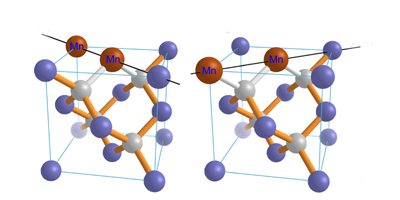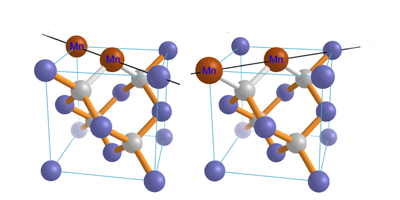Anisotropy Defying Crystal Symmetry
Much can be understood about the properties of a material just by analyzing the symmetry of its crystal structure with the tools of group theory. The conclusions of such an analysis for a given bulk material are often assumed to hold for its alloys too, but it is unclear if this is true when the distribution of added alloy constituents is not strictly random. An example is the dilute magnetic semiconductor , which exhibits in-plane magnetocrystalline anisotropy, even though the lattice symmetry does not allow it.
In Physical Review Letters, Magdalena Birowska at the University of Warsaw, Poland, and colleagues report calculations showing that a nonrandom distribution of magnetic ions in the dilute magnetic semiconductor can in fact explain the observed anisotropy. With the help of quantitative predictions from ab initio calculations and symmetry analysis they show that the puzzling anisotropy is caused by the preferred formation of manganese dimers along a specific crystalline direction at the growth surface. This work suggests that magnetic anisotropy could be controlled by varying the layer-by-layer growth of the material. In more general terms, the authors have shown how a specific microscopic distribution of constituents may affect the symmetry properties and macroscopic behavior of alloys in ways that go beyond the standard group theory analysis. – Athanasios Chantis





